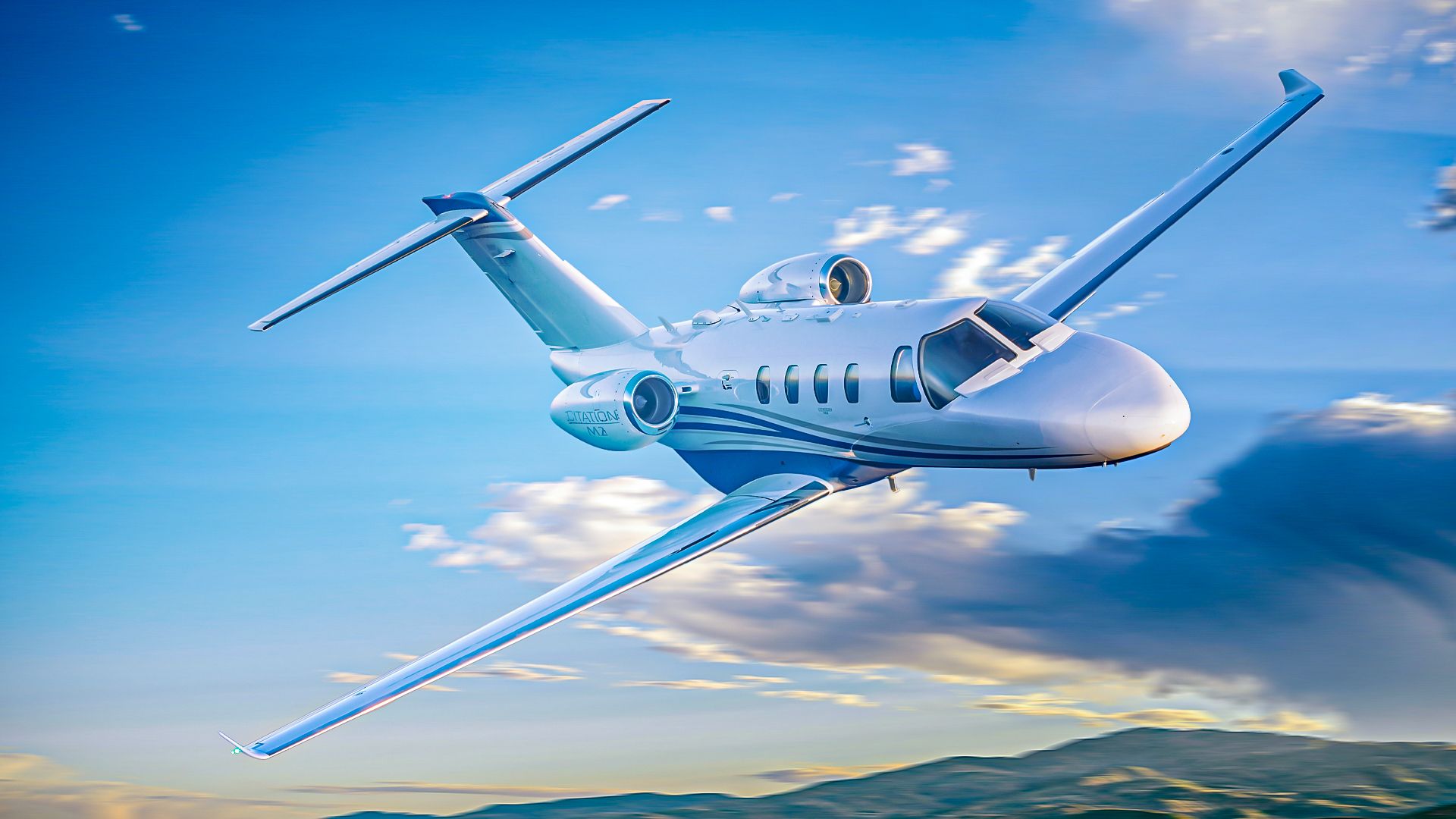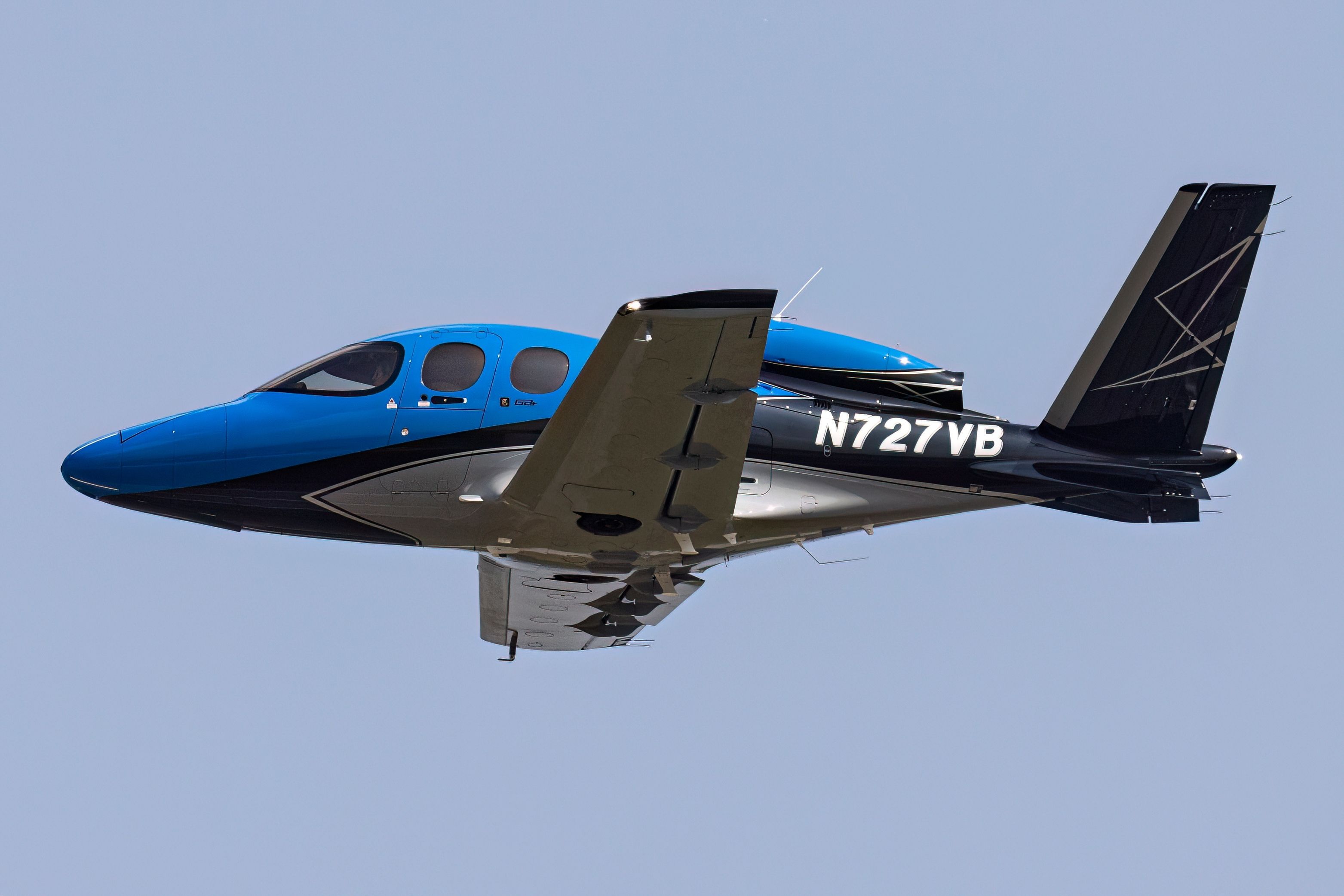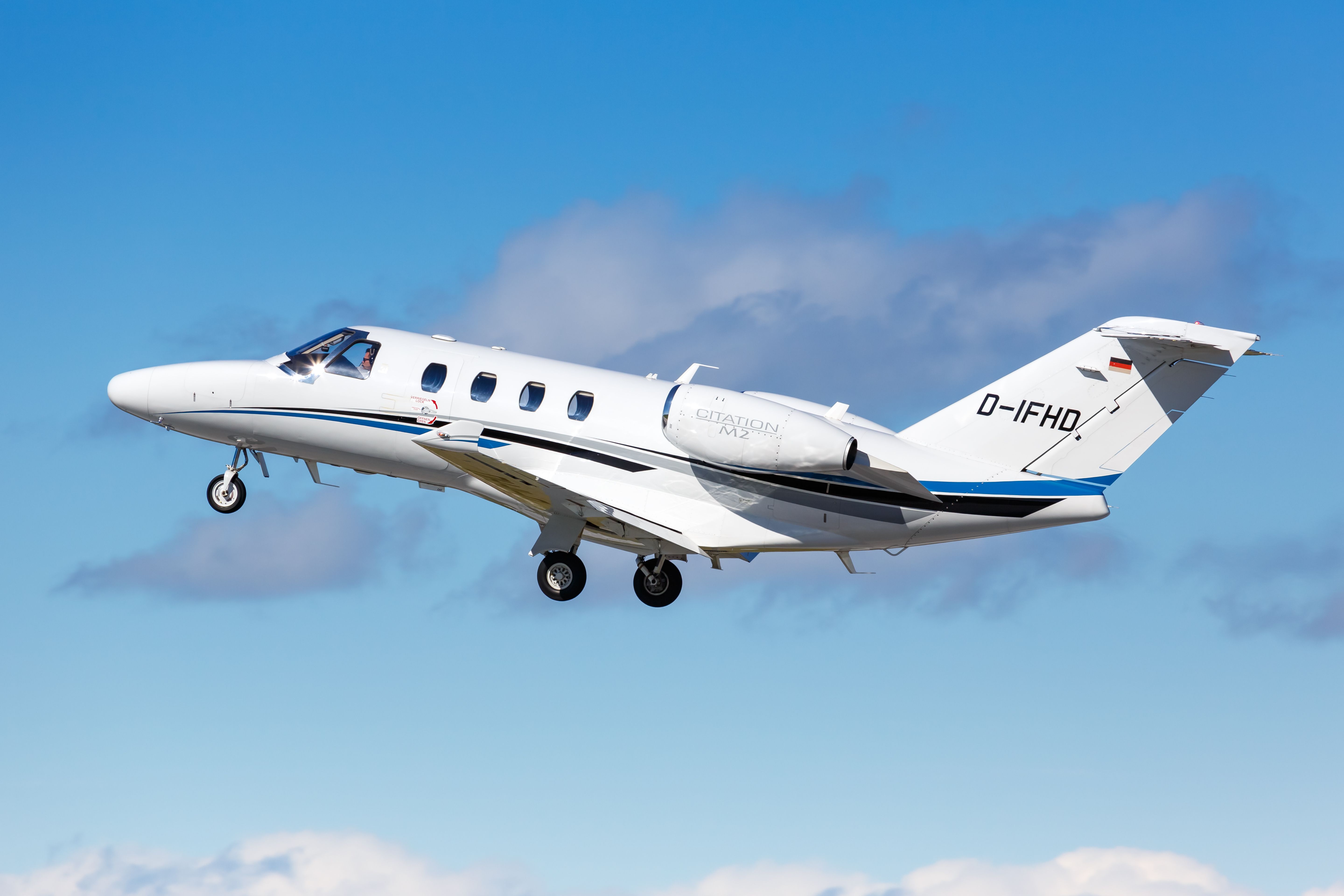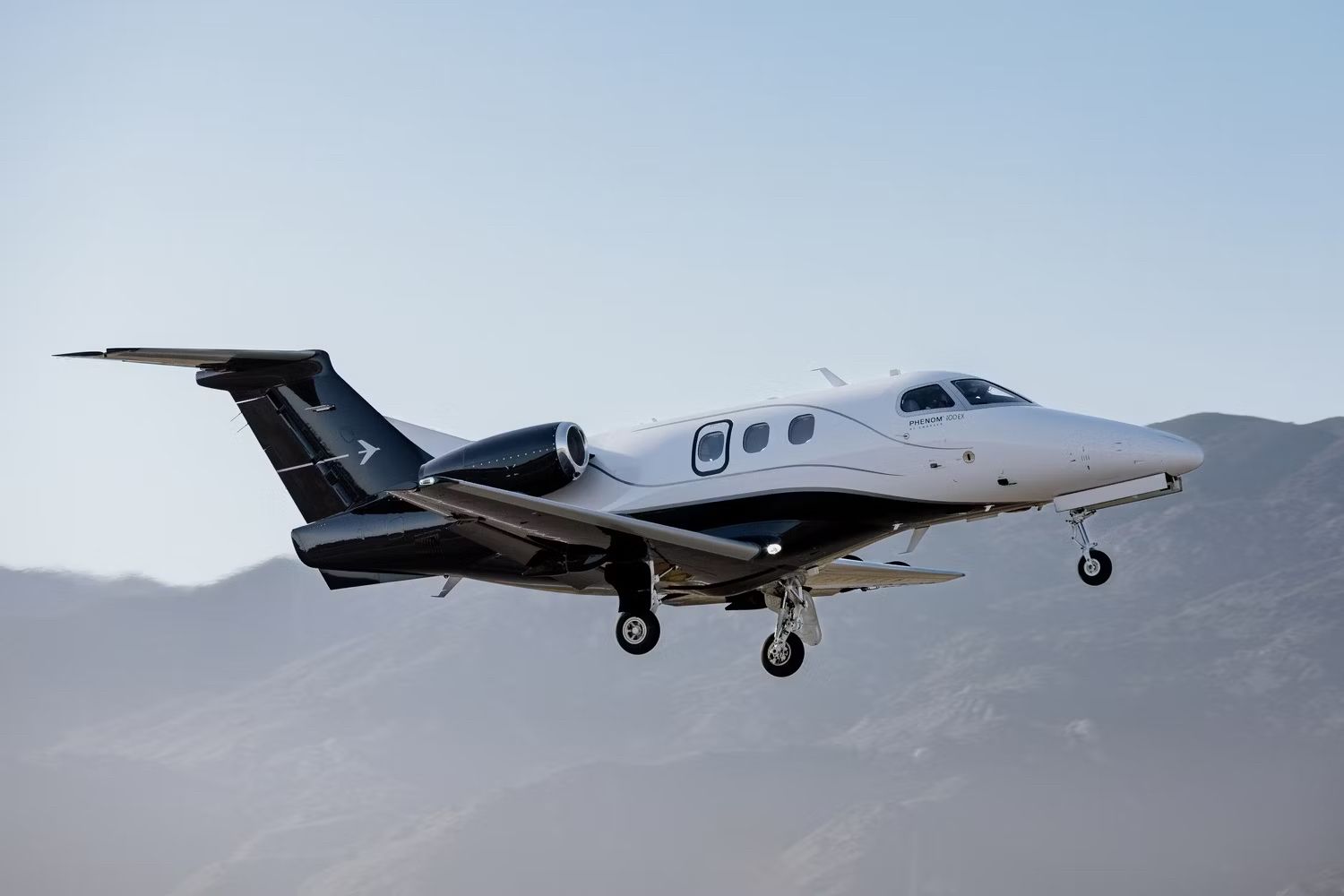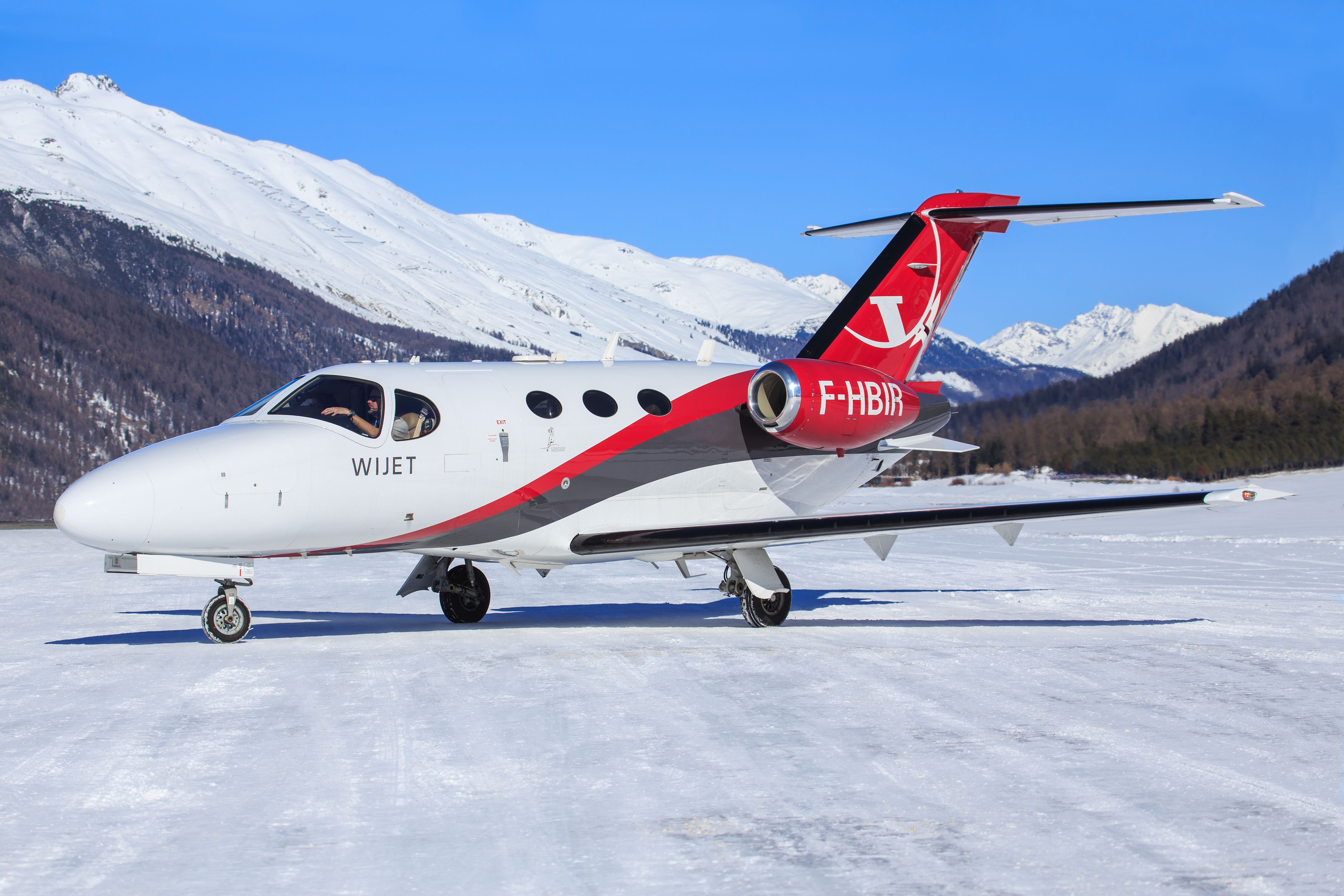Summary
- Private jets offer flexibility in flight schedules and departure airports, catering to travelers seeking convenience and freedom.
- Very light business jets provide a range of options for different passenger capacities, sizes, and runway capabilities, appealing to pilot owners.
- Popular models like Cirrus Vision SF50, Eclipse 500, and Cessna Citation M2 offer comfort and performance for short to mid-range flights.
Private jets are the ultimate luxury when traveling. Flying privately allows travelers to fly whenever they want, and are not forced to abide by commercial aircraft scheduling. It also allows travelers to depart from a wide range of airports. Business jets are typically smaller than commercial jets. This means that business jets can take off and land on runways that are much shorter and smaller in size compared to the larger, commercial airports. This gives travelers who fly privately many more airports to choose from when traveling.

Related
What Is The Very Light Aircraft With The Longest Range?
It is the longest-range aircraft in the very light category.
Overall, business jets range in size. At the larger end of the spectrum are ultra-long-range business jets, which can fly nearly 8,000 nautical miles (9,206 miles) and can typically hold up to 20 passengers. However, at the smaller end of the spectrum, there are very light business jets. These business jets typically hold around six passengers and are much smaller in size when compared to larger business jets. These jets may have lower cruise speeds and shorter ranges, but very light business jets can take off and land on extremely short runways and are typically approved for single pilot operations. This means that these private jets are great entry-level jets for pilot owners.
The idea of very light business jets has been around since the 1950s. However, the market did not take off until the introduction of several variants in the early 2000s. Let’s take a closer look at several very light business jets and what makes them so appealing to pilots and operators.
6
Cirrus Vision SF50
Introduced in December 2016
|
Capacity |
Six passengers |
|---|---|
|
Length |
30 feet eleven inches |
|
Height |
Ten feet eleven inches |
|
Wingspan |
38 feet eight inches |
|
Cruise speed |
305 knots (351 miles per hour) |
|
Range |
1,200 nautical miles (1,381 miles) |
|
Flight ceiling |
31,000 feet |
Cirrus began designing the Vision Jet as early as 2003. The jet had an immediate positive response after it was announced in June 2006. The aircraft was said to be the slowest, lowest, and the cheapest jet available by Cirrus itself. However, even with the positive response, the program had difficulty receiving funding, mostly due to financial difficulties caused by the Great Recession. So far, over 500 Vision Jets have been delivered.
Photo: Blue Baron Photo | Shutterstock
The Cirrus SF50 is a low-wing aircraft that is made almost entirely out of composite material. It can fit up to seven passengers, although the back row is significantly smaller and is typically used for small children. It has a single Williams FJ33 turbofan engine on the top of the fuselage, which provides just under 2,000 pounds of force of thrust. This entry-level jet comes with the Cirrus ballistic parachute recovery system and newer aircraft come with the safe return autoland system provided by Garmin.
5
Eclipse 500
Introduced in December 2006
|
Capacity |
Six passengers |
|---|---|
|
Length |
33.5 feet |
|
Height |
Eleven feet |
|
Wingspan |
37.9 feet |
|
Cruise speed |
370 knots (430 miles per hour) |
|
Range |
1,125 nautical miles (1,295 miles) |
|
Flight ceiling |
41,000 feet |
Eclipse Aviation based the Eclipse 500 on the Williams V-Jet II, a testbed aircraft for turbofan engine development by Williams. After the Williams V-Jet saw a positive response when it was publicly displayed at the 1997 Oshkosh Airshow, the founders of Eclipse Aviation started the company to bring a similar concept to production. After several years of development, Eclipse Aviation brought the Eclipse 500 into production in December 2006.
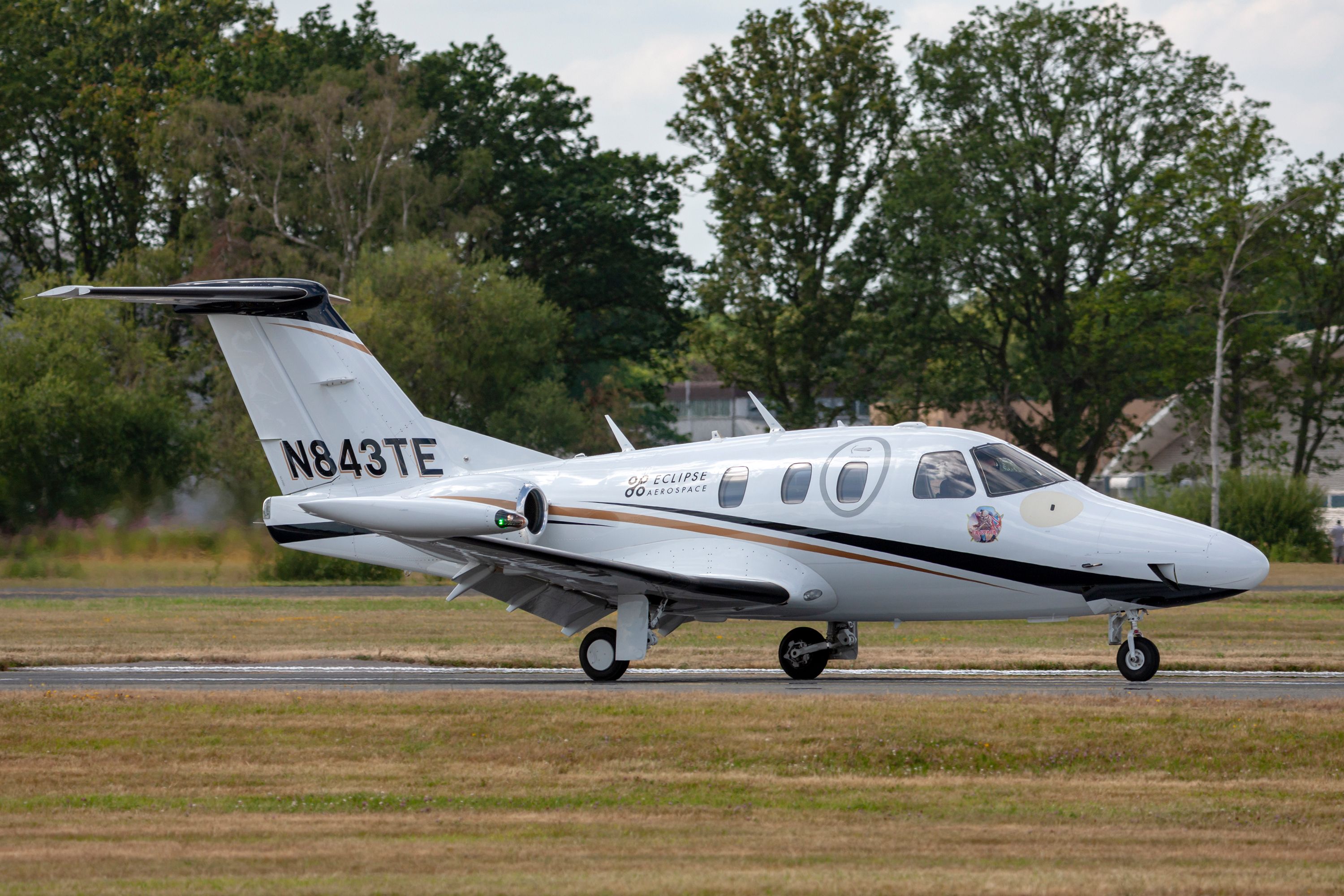
Related
The Rise And The Fall Of The Eclipse 500 Light Business Jet
Over 250 business jets were produced from 2006 to 2008.
The Eclipse 500 is built with an all-metal frame, mostly aluminum. It utilizes a glass cockpit, called the Avio avionics system. Although the aircraft was designed from a Williams jet, the Eclipse 500 was certified with Pratt & Whitney Canada PW610F turbofan engines, which provide just under 1,000 pounds of force of thrust. The aircraft eventually ceased production in the late 2000s, after Eclipse Aviation declared bankruptcy due to a lack of funding. However, Eclipse still delivered over 250 of these very light business jets. Six passengers can sit in the Eclipse 500, although this requires someone to sit in the flight deck.
4
Cessna Citation M2
Introduced in September 2013
|
Capacity |
Seven passengers |
|---|---|
|
Length |
42 feet seven inches |
|
Height |
13 feet eleven inches |
|
Wingspan |
47 feet three inches |
|
Cruise speed |
404 knots (465 miles per hour) |
|
Range |
1,550 nautical miles (1,783 miles) |
|
Flight ceiling |
41,000 feet |
The Cessna Citation M2 is one of the company’s longest running projects. The Citation M2 was developed from the original CitationJet. This aircraft borders the line between the very light business jet market and the light business jet market. The CitationJet was first developed in the late 1980s, after the Citation I was discontinued. Cessna wanted to maintain a smaller aircraft, yet still increase its range, speed, and keep its operating costs low. The Wichita, Kansas-based company introduced the original CitationJet in 1989, and began deliveries of the aircraft in March 1993. Specifically, nearly 400 Citation M2s have been introduced.
Photo: Markus Mainka | Shutterstock
Cessna released the CJ1 and the CJ1+ as upgraded variants in the 2000s. After a brief hiatus in 2011 through 2013 from producing any of the CitationJet variants, the company began offering the Citation M2. This variant had improved engines that offered up to 15% more thrust, reaching nearly 2,000 pounds of force of thrust. It also equipped the aircraft with the Garmin G3000 avionics system. Winglets and other minor improvements were also introduced. The aircraft was still able to maintain its take off and runway performance, as it can take off on runways that are just over 3,200 feet long and land on runways that are under 2,600 feet. Each variant of the CitationJet and the Citation M2 has the same capacity and can fit about seven passengers.
3
Embraer Phenom 100
Introduced in December 2008
|
Capacity |
Seven passengers |
|---|---|
|
Length |
42 feet seven inches |
|
Height |
13 feet eleven inches |
|
Wingspan |
47 feet three inches |
|
Cruise speed |
404 knots (465 miles per hour) |
|
Range |
1,550 nautical miles (1,783 miles) |
|
Flight ceiling |
41,000 feet |
Embraer decided it wanted to enter the lighter side of the business jet market in the early 2000s. Specifically, the Brazilian manufacturer wanted to become a provider in the very light business jet market and the light business jet market. It began by designing the Phenom 100 in 2005. After a short developmental program, the aircraft flew for the first time in July 2007. The first delivery of the aircraft occurred in December 2008. Over 400 aircraft have been delivered since. Embraer also offers several upgraded variants, including the Phenom 100E, Phenom 100EV Evolution, and the Phenom 100EX, which was unveiled in 2023. Embraer also utilized the design of the Phenom 100 to develop the Phenom 300, which would later be the company’s entry into the light business jet market.
Photo: Embraer
The Phenom 100 utilizes a mostly aluminum alloy structure, although about 20% of the airframe is made of composite materials. The aircraft is powered by two Pratt & Whitney Canada PW617-F turbofan engines, which each provide about 1,700 pounds of force of thrust. These engines help maintain its required take off runway of under 3,200 feet. The Phenom 100 also utilizes Embraer’s Prodigy Touch avionics system. This flight deck is based on the Garmin G3000 avionics suite. Inside the cabin, the Phenom 100 has a maximum capacity of seven passengers, although this requires a belted lavatory seat and a passenger in the cockpit. Therefore, the standard seating configuration fits up to five passengers.
2
HondaJet HA-420
Introduced in December 2015
|
Capacity |
Seven passengers |
|---|---|
|
Length |
42 feet seven inches |
|
Height |
14 feet eleven inches |
|
Wingspan |
39 feet nine inches |
|
Cruise speed |
422 knots (486 miles per hour) |
|
Range |
1,223 nautical miles (1,407 miles) |
|
Flight ceiling |
43,000 feet |
Honda first started studying the role of very light business jets in the late 1980s through Honda R&D Americas. After establishing a research facility at Piedmont Triad International Airport (GSO) in Greensboro, North Carolina, this business segment began designing an early proof of concept as early as 2003. However, Honda was still unsure of its benefits in the aviation industry. Because of this, the lead designer of the product, Michimasa Fujino, displayed the prototype aircraft at the annual EAA AirVenture Airshow in Oskosh, Wisconsin, in 2005. Public interest in the business jet was so popular that Honda formed Honda Aircraft Company to begin commercializing the HondaJet.
However, a long development and certification process stalled progress for several years. The Federal Aviation Administration (FAA) finally awarded the aircraft its type certificate in December 2015, which enabled deliveries to begin shortly after.
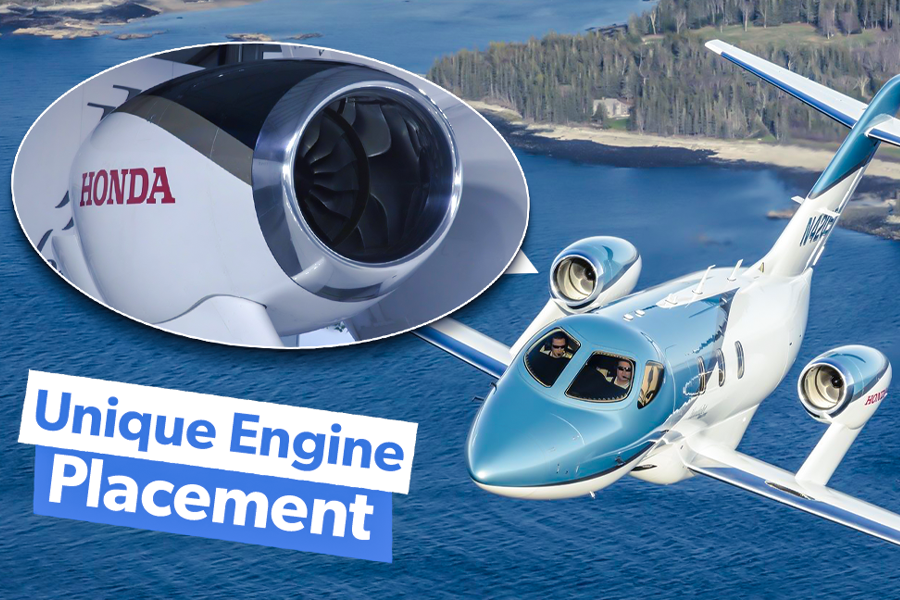
Related
Optimal Engine Placement: A Guide To The HondaJet’s Unique Engine Layout
Honda produces its aircraft with its engines over-the-wing.
The aircraft itself is a low-wing aircraft that utilizes a composite fuselage and an aluminum wing. One of the unique features are two GE Honda HF120 turbofan engines that are mounted on the wing instead of the fuselage. These engines provide about 2,000 pounds of force of thrust. The placement of the engines helps to lower the noise inside the cabin as well as reduce drag on the wing. Updated variants are built with the Garmin G3000 glass cockpit as its avionics system. Inside the cabin, the HondaJet can fit a maximum of seven passengers. However, the typical seating configuration can fit about four to five passengers.
1
Cessna Citation Mustang
Introduced in November 2006
|
Capacity |
Five passengers |
|---|---|
|
Length |
40 feet seven inches |
|
Height |
13 feet five inches |
|
Wingspan |
43 feet two inches |
|
Cruise speed |
340 knots (390 miles per hour) |
|
Range |
1,167 nautical miles (1,343 miles) |
|
Flight ceiling |
41,000 feet |
Another famous very light business jet developed by Cessna is the Citation Mustang. The Citation Mustang was produced simultaneously as the CJ1+, which led to Cessna dominating the very light business jet market. This aircraft also ended up overlapping with the production of the Citation M2, which eventually led to Cessna ceasing production of the Citation Mustang. Cessna originally launched the Citation Mustang at the 2002 annual National Business Aviation Administration (NBAA) convention. After several years of development, it flew for the first time in April 2005 and was officially certified by the Federal Aviation Administration (FAA) in September 2006.
Photo: Mike Fuchslocher | Shutterstock
The Citation Mustang has a typical appearance for a light business jet, with a low wing and retractable tricycle landing gear. It has only three windows on its fuselage, as it can fit a maximum of five passengers in its maximum capacity configuration. The aircraft utilizes two Pratt & Whitney Canada PW615F turbofan engines which provide 1,460 pounds of force of thrust. This helps the aircraft reach a rate of climb that is over 3,000 feet per minute, and it also allows the aircraft to take off on runways that are just over 3,100 feet and land on runways that are under 2,400 feet. The Citation Mustang can fit four to five passengers, which makes it an ideal entry-level jet for a pilot owner.

